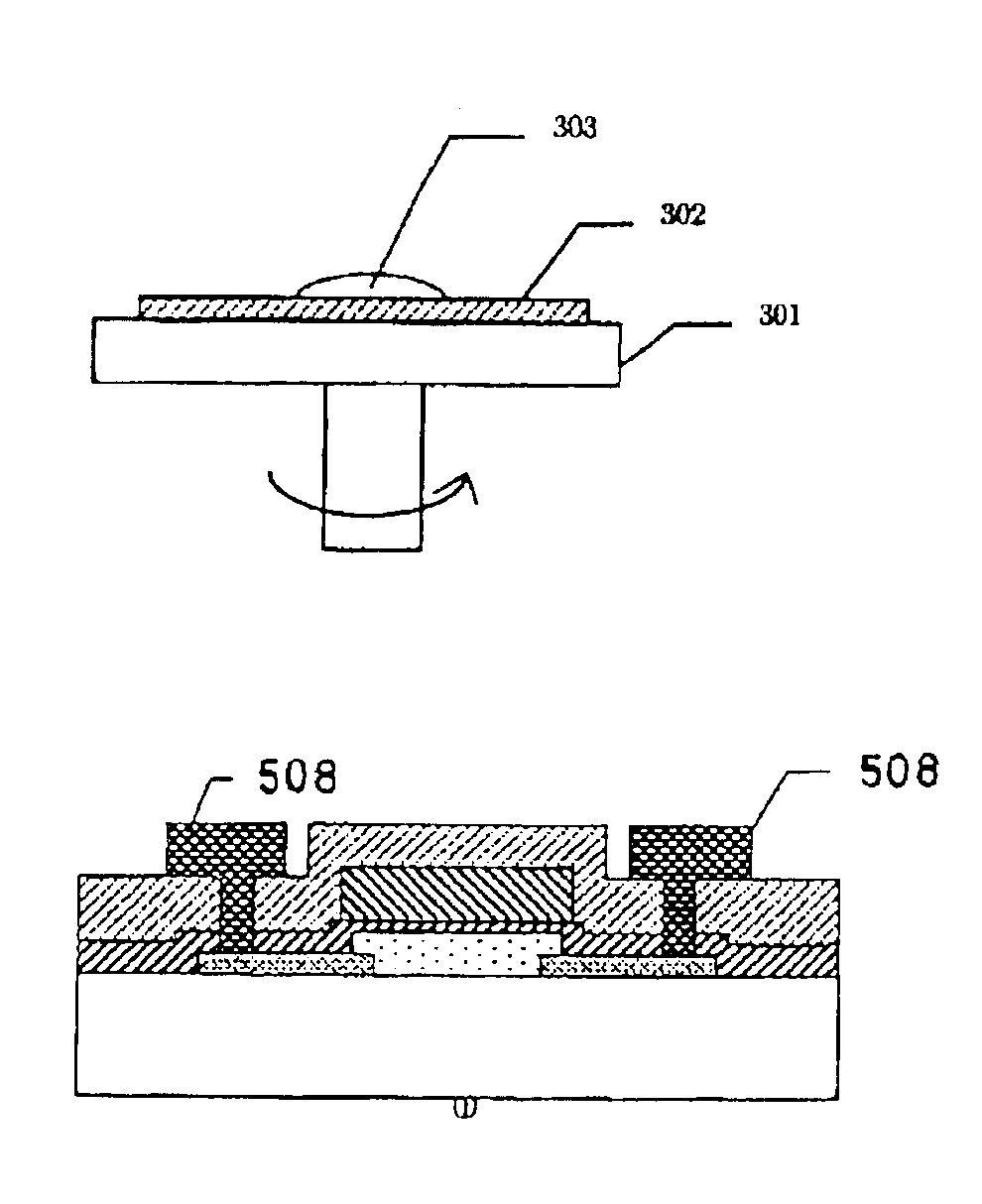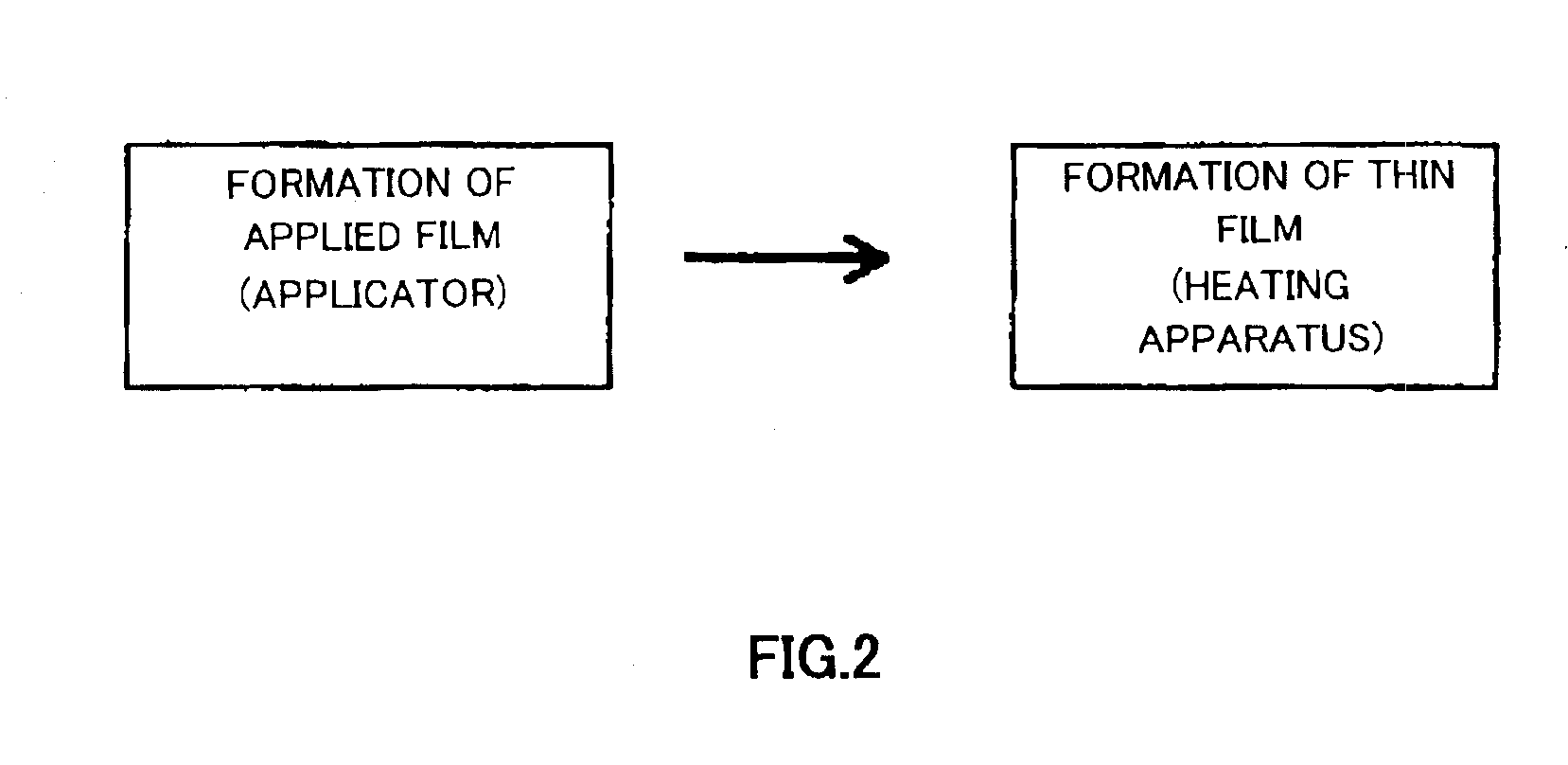Method of manufacturing device, device, and electronic apparatus
a manufacturing device and electronic equipment technology, applied in the direction of semiconductor devices, electrical equipment, transistors, etc., can solve the problems of low raw material utilization efficiency, low productivity, and difficult handling
- Summary
- Abstract
- Description
- Claims
- Application Information
AI Technical Summary
Benefits of technology
Problems solved by technology
Method used
Image
Examples
embodiments
[0113]Now, although the present invention will be described in detail in conjunction with embodiments, the present invention is not limited to such embodiments.
first embodiment
[0114]A first embodiment of the present invention is shown in FIG. 4. FIG. 4 illustrates a process of manufacturing a coplanar type thin film transistor according to the first embodiment of the present invention. In FIG. 4(a), on a glass substrate 401 on which an insulating film 412 is previously formed as a base, an applied film is formed at the rate of revolution of 500 rpm using as a liquid material a solution refined by filtering with a 1 μm filter the liquid material (high-order silane solution) after irradiating with TV rays of 20 mW / cm2 having a wavelength of 308 nm for 20 minutes to a benzene solution of 50 ml containing 15 wt % of cyclopentasilane. Next, after carrying out a heat treatment at 100° C. for 20 minutes to remove the solvent of the applied film, a heat treatment is carried out again at 400° C. for 30 minutes to make the applied film into a metallic silicon film. Next, the laser annealing with an energy density of 300 mJ / cm2 is carried out to form a polycrystalli...
second embodiment
[0124]A second embodiment of the present invention is shown in FIG. 5. FIG. 5 illustrates a process of manufacturing a staggered type thin film transistor according to the present invention. In FIG. 5(a), reference numeral 501 indicates a glass substrate and reference numerals 502 and 503 indicate doped silicon films which will become the source / drain regions and which dopants are doped in. The formation of the doped silicon films is carried out as follows. That is, as liquid material (high-order silane solution) obtained by irradiating with UV rays of 15 mW / cm2 having a wavelength of 436 nm for 15 minutes a toluene solution of 50 ml containing 30 wt % of cyclopentasilane, adding decaborane of 0.5 g to the solution and then filtering the resultant solution with a 0.5 μm filter, is applied to form an applied film. Subsequently after carrying out an heat treatment at 150° C. for 30 minutes to remove the solvent of the applied film, a heat treatment is carried out again at 350° C. for ...
PUM
 Login to View More
Login to View More Abstract
Description
Claims
Application Information
 Login to View More
Login to View More - R&D
- Intellectual Property
- Life Sciences
- Materials
- Tech Scout
- Unparalleled Data Quality
- Higher Quality Content
- 60% Fewer Hallucinations
Browse by: Latest US Patents, China's latest patents, Technical Efficacy Thesaurus, Application Domain, Technology Topic, Popular Technical Reports.
© 2025 PatSnap. All rights reserved.Legal|Privacy policy|Modern Slavery Act Transparency Statement|Sitemap|About US| Contact US: help@patsnap.com



